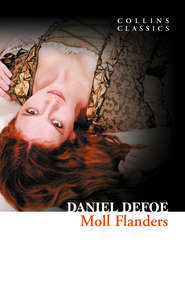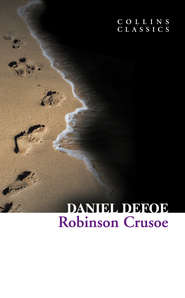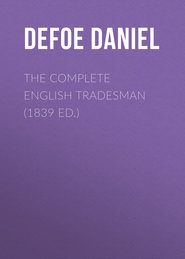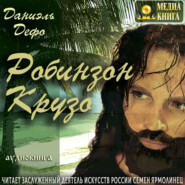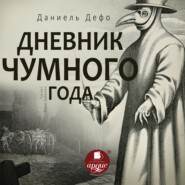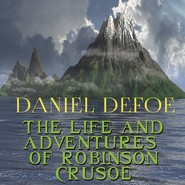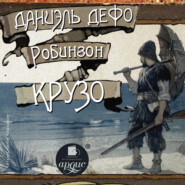По всем вопросам обращайтесь на: info@litportal.ru
(©) 2003-2024.
✖
A Tour Through the Whole Island of Great Britain II
Настройки чтения
Размер шрифта
Высота строк
Поля
The lower court, as I mentioned, of the castle, though not so beautiful, for the stately lodgings, rooms of state, &c. is particularly glorious for this fine chapel of the Order, a most beautiful and magnificent work, and which shews the greatness, not only of the Court in those days, but the spirit and genius of the magnanimous founder. The chapel is not only fine within, but the workmanship without is extraordinary; nothing so antient is to be seen so very beautiful. The chapel of St. Stephen’s in Westminster-Abby, called Henry VIIth’s Chapel, and King’s College Chapel at Cambridge, built by Henry VI. are fine buildings; but they are modern, compared to this, which was begun, as by the inscribed dates upon the works appears, in the year 1337.
The coats of arms, and the various imagery &c. even inside and outside, not only of the king, but of several of the first Knights Companions, are most admirably finished, and the work has stood out the injury of time to admiration; the beauty of the building remains without any addition, and, indeed, requiring none.
’Tis observable, that King Edward owns this chapel was begun by his ancestors, and some think it was by King Edward I. and that he himself was baptized in it, and that there was a castle built by William the Conqueror also: As to the chapel, which was then called a church, or a convent, King Edward III. did not pull down the old building intirely, but he added all the choir to the first model, and several other proper parts for the purposes intended; as houses and handsome apartments for the canons, dignitaries, and other persons belonging to the church, which are generally situated on the north side of the square, out of sight, or rather skreen’d from the common view by the church itself, which dwellings are, notwithstanding, very good, and well accommodated for the persons who are possessors of them; then the king finished it in the manner we now see it: As for the old castle, the building of William the Conqueror, the king pulled it intirely down, even to the very foundation, forming a new building according to the present plan, and which stood, as above, to the time of King Charles II. without any alteration.
The establishment for this chapel was very considerable, by the donation of divers subjects, before it was set apart to be the chapel of the Order; the Duke of Suffolk in particular, as appears in Dugdale’s Monasticon, gave near three thousand acres of land, nineteen manors, one hundred seventy messuages and tofts, and several advowsons of churches to it, which, with other gifts afterwards, made the revenue above one thousand pounds a year in those days, which was a prodigious sum, as money went at that time.
In the choir are the stalls for the knights of the Order, with a throne for the sovereign; also stalls in the middle of it for the poor knights pensioners, who live in their house or hospital on the south side of the square or court which the church stands in.
Here are to be seen, the banners of the knights who now enjoy the honour of the Garter: When they die, those banners are taken down, and the coat of arms of the deceased knight set up in the place allotted for those arms over the same stall, so that those coats of arms are a living history, or rather a record of all the knights that ever have been since the first institution of the Order, and how they succeeded one another; by which it appears, that kings, emperors and sovereign princes, have not thought it below them to accept of the honour of being Knights Companions of this Order; while, at the same time, it must be noted to the honour of the English Crown, that our kings have never thought fit to accept of any of their Orders abroad, of what kind soever, whether Popish or Protestant; that of the Cordon Blue, or the Cordon Blanc, the Cordon Noir, or the Cordon Rouge, the Golden Fleece of Spain, the Holy Ghost of France, or the Black Eagle of Prussia, or any other; whereas of the Garter, there is an account by the register of the Order, that there are reckoned up of this most noble company,
Several kings, and persons of high rank have been buried also in this chapel; as Edward IV. and Charles I. Also here is the family repository, or burying ground of the Dukes of Beauford, who are a natural branch of the royal family, by the antient House of Lancaster; and in the chapel where the vault is there is a very noble monument of the last duke save one.
All the ceremonies observed here in the installment of the knights, are so perfectly and fully set down in Mr. Ashmole’s History of the Order of the Garter, that nothing can be said, but what must be a copy from him, which, as above, I studiously decline, and therefore refer you to him.
Besides the foreign princes, Companions of this famous Order as above; there is a little gallaxie of English nobility, the flower of so many Courts, and so many ages, to whose families the ensigns of the Order have been an honour, and who are not the least of the honour this Order has to boast of.
In the first institution, there was but one duke, namely, the great Duke of Lancaster; but as that order of nobility is since much increased in England, since the days of King Edward III. so in the present list of knights, we find no less than fifteen dukes, including the Prince of Wales, who is also Duke of Cornwall. The list of the present knights are as follow, viz.
As the upper court and building are fronted with the fine terrace as above, so the lower court, where this fine chapel stands, is walled round with a very high wall, so that no buildings, if there was room for any, could overlook it, which wall goes round the west end of the court to the gate, which looking south, leads into the town, as the gate of the upper court looks likewise S. E. into the park, which they call the Little Park.
Вы ознакомились с фрагментом книги.
Приобретайте полный текст книги у нашего партнера:
Приобретайте полный текст книги у нашего партнера:








